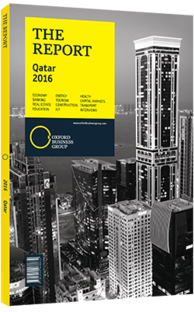Jassim bin Saif Ahmed Al Sulaiti, Minister of Transport and Communications: Interview

Interview: Jassim bin Saif Ahmed Al Sulaiti
How is the new Hamad Port being positioned to compete with neighbouring ports? Is there any defining strategy that will set it apart?
JASSIM BIN SAIF AHMED AL SULAITI: Hamad Port is strategically located to handle the expanding trade in the Gulf and beyond, into the hinterland of Qatar and neighbouring GCC countries. The facilities will feature cutting-edge technology and associated systems that will cater to all types of vessels, cargo handling and clearance, and throughput rates that will set the facility apart from the region’s existing ports. Environmental protection strategies – such as sustainable resource use, waste management and sustainability certification for buildings – will ensure the port achieves a sustainable balance between economic growth, social development and environmental protection.
What does the early operational phase of the new port mean for its overall operational efficiency?
AL SULAITI: The transfer of operations from the existing Doha Port to Hamad Port has involved the transfer of staff employed by Qatar Ports Management Company (Mwani), government agencies, stakeholders and service providers. While these organisations have worked efficiently and effectively at Doha Port, the early operational phase has allowed the integration of their activities in the improved working environment offered by Hamad Port. Thus incremental transfer of operations has been possible, with roll-on/roll-off (ro-ro) and livestock cargos being relocated seamlessly. The operational team has been able to improve the efficiency rates at Doha Port since the early operations facility has been designed specifically as a ro-ro and livestock handling terminal.
The successful transfer of operations will serve as a template for the timely transfer of all remaining cargoes from Doha Port to Hamad Port as planned in the second quarter of 2016. Lessons learned will be applied to the subsequent commissioning of assets and terminal areas so that containers and general cargo can be accepted in a phased, controlled manner. Business disruption will be avoided and throughput improvements can be seen at the earliest stage. Once the first phase becomes fully operational in 2016, it will increase annual handling capacity in Qatar to 2m twenty-foot equivalent units (TEUs) from the 750,000-TEU capacity at the existing port. Once the first phase is operational we will evaluate the timelines for the other two phases, which would bring the total handling capacity to 6m TEUs once completed.
Where do authorities stand in terms of appointing an operator contract for Hamad Port, and how successful have efforts been to attract shipping lines to the facilities given the early opening?
AL SULAITI: Mwani is handling the early operations facility, and is involved in discussions over creating a joint venture that will be responsible for running future port operations. This will be a joint venture between Mwani and the selected operating company. Early operations have been very successful as all ro-ro and livestock vessels are now calling at Hamad Port for unloading and delivering goods to the Qatari market. The results are encouraging in terms of the relationships already built between Mwani, the shipping lines and the port community at large, which will have a positive impact on the full opening and operations.
With Hamad International Airport (HIA) now operational for over a year, where does the development plan for the Airport City project stand?
AL SULAITI: The original scope for Airport City is currently under review to ensure that it is aligned with the future needs of HIA, Qatar Airways and the state of Qatar. The timeframe will be determined once the scope of the project is defined. Stakeholders are engaged in discussions at present and should reach a consensus on the overall scale and scope in 2016.
You have reached the limit of premium articles you can view for free.
Choose from the options below to purchase print or digital editions of our Reports. You can also purchase a website subscription giving you unlimited access to all of our Reports online for 12 months.
If you have already purchased this Report or have a website subscription, please login to continue.

